Related Research Articles
Chief Rabbi is a title given in several countries to the recognized religious leader of that country's Jewish community, or to a rabbinic leader appointed by the local secular authorities. Since 1911, through a capitulation by Ben-Zion Meir Hai Uziel, Israel has had two chief rabbis, one Ashkenazi and one Sephardi.

The Abravanel family, also spelled as Abarbanel, Abrabanel, Avravanel, Barbernell, or Barbanel – literally meaning Ab ("father") rabban ("priest") el – is one of the oldest and most distinguished Jewish families. It first achieved prominence on the Iberian peninsula during the Middle Ages. Its members claim to trace their origin to the biblical King David. Members of this family lived in Seville, Córdoba, Castile-Leon, and Calatayud. Seville is where its most prominent representative, Don Judah Abravanel, once dwelt.
Spanish and Portuguese Jews, also called Western Sephardim, Iberian Jews, or Peninsular Jews, are a distinctive sub-group of Sephardic Jews who are largely descended from Jews who lived as New Christians in the Iberian Peninsula during the immediate generations following the forced expulsion of unconverted Jews from Spain in 1492 and from Portugal in 1497.

Bevis Marks Synagogue, officially Qahal Kadosh Sha'ar ha-Shamayim, is the oldest synagogue in the United Kingdom in continuous use. It is located off Bevis Marks, Aldgate, in the City of London.

The history of the Jews in Portugal reaches back over two thousand years and is directly related to Sephardi history, a Jewish ethnic division that represents communities that originated in the Iberian Peninsula.
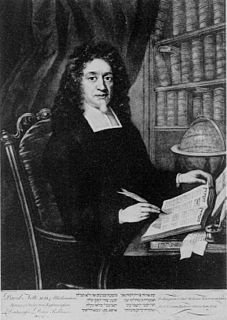
David Nieto was the Haham of the Spanish and Portuguese Jewish community in London, later succeeded in this capacity by his son, Isaac Nieto.
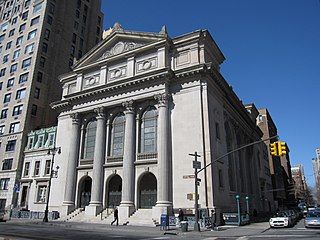
The Congregation Shearith Israel – often called The Spanish and Portuguese Synagogue – is the oldest Jewish congregation in the United States. It was established in 1654 in New Amsterdam by Jews who arrived from Dutch Brazil. Until 1825, when Jewish immigrants from Germany established a congregation, it was the only Jewish congregation in New York City.
Isaac Nieto (1702–1774) was Haham of the Portuguese congregation Sha'are Hashamayim, Bevis Marks, London, and the son of David Nieto. He was officially appointed as "ḥakham ha-shalem" in 1733, but gave up the post in 1741 and went abroad. He returned in 1747 and took up the profession of notary.

David de Aaron de Sola or David Aaron de Sola (1796–1860) was a rabbi and author, born in Amsterdam, the son of Aaron de Sola.

Raphael Meldola was a Rabbi who served in the United Kingdom of Great Britain and Ireland. Born in Livorno, he died in London.

Francisco António de Almeida was a Portuguese composer and organist.
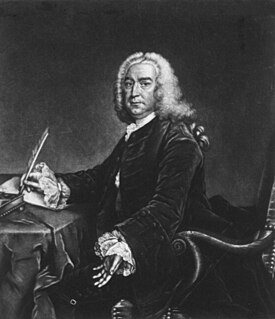
Jacob Henriques de Castro Sarmento was a Portuguese estrangeirado, physician, naturalist, poet and Deist.
Meyer Löw Schomberg was a German-Jewish physician who moved to London and had a successful business there.
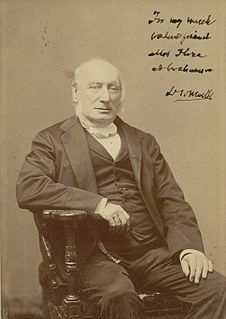
Reverend David Woolf Marks was a Hebrew scholar and minister. He was the first religious leader of the West London Synagogue, which seceded from the authority of the Chief Rabbi, where he advocated a quasi-Karaite philosophy.

D. António de Almeida Soares de Portugal, 1st Count and 1st Marquess of Lavradio, 4th Count of Avintes, Governor General of Angola and Viceroy of Brazil. Born in Lisbon, Portugal on 1 May 1701; died in São Salvador da Bahia, Brazil on 4 July 1760. The first Marquess of Lavradio was a prominent Portuguese statesman and the head of an established noble family.
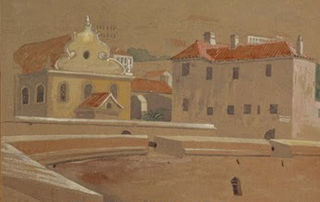
The four active synagogues of Gibraltar are colloquially known as the Great Synagogue, the Little Synagogue, the Flemish Synagogue, and the Abudarham Synagogue. The first synagogue established after the 1717 expulsion of Jews from Gibraltar, the Great Synagogue, was built on what is now known as Engineer Lane, and remains Gibraltar's principal synagogue. The Little Synagogue, founded in 1759 in Irish Town, was the result of the desire of Moroccan Jews for a less formal service. The lavish Flemish Synagogue was built at the turn of the nineteenth century on Line Wall Road, due to the request of some congregants for a return to more formal, Dutch customs. The last synagogue to be established in what is now the British overseas territory of Gibraltar, the Abudarham Synagogue, was founded in 1820 on Parliament Lane by recent Moroccan immigrants.
Sequeira may refer to:

Tomás de Almeida was the first Patriarch of Lisbon, formerly Bishop of Lamego and later of Porto. Pope Clement XII elevated him to the cardinalate on 20 December 1737.

Isaac Henrique Sequeira (1738-1816) was a Portuguese Sephardic Jewish doctor.
References
- 1 2 3 4 5 Edgar Samuel, ‘Samuda, Isaac de Sequeira (bap. 1681, d. 1729)’, Oxford Dictionary of National Biography, Oxford University Press, 2004; online edn, January 2015. Retrieved 10 January 2017.
- 1 2 Carla Costa Vieira, Observing the skies of Lisbon. Isaac de Sequeira Samuda, an estrangeirado in the Royal Society, Notes & Records, 20 June 2014 Volume 68, issue 2. Royal Society. DOI: 10.1098/rsnr.2013.0049. Retrieved 10 January 2107
- ↑ Isaac de Sequeira Samuda, Sermam funebre pera as exequias dos trinta Dias do insigne, eminente e pio Haham e Doutor R. David Netto, (London, 1728), p. 119. Quote: "Theologo sublime, Sabio fundo, / Medico insigne, Astronomo famoso, / Poeta doce, Pregador facundo, / Logico arguto, Physico engenhoso, / Rhetorico fluente, Author jucundo, / Nas Linguas prompto, Historias noticioso: / Posto que tanto em pouco, aquy se encerra, / Que o muito, e pouco em morte hé pouca terra."
- ↑ Mile End Cemeteries: London, on the website of the International Jewish Cemetery Project